Germany, Austria and Switzerland are known throughout the world for their bread diversity. In Erschmatt, in the Swiss canton of Valais, villagers still bake rye bread in the historic bakery as it was done for centuries. With hands, wooden tools and a lot of time!
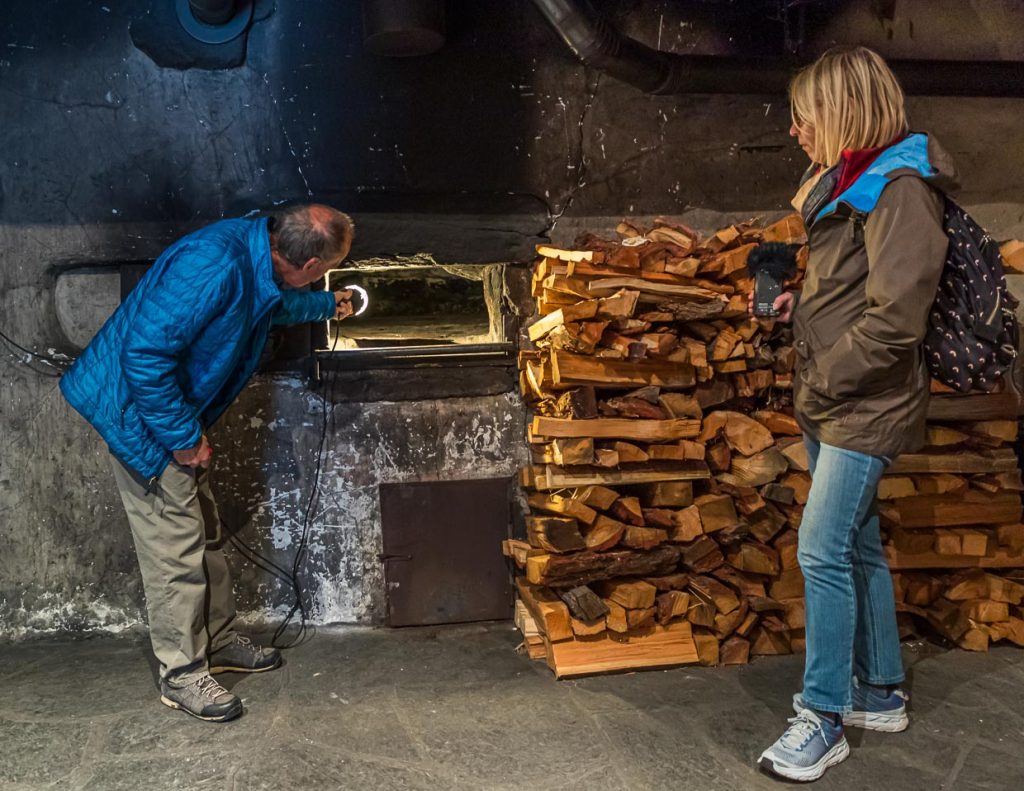
Once a year, in December, they heat up the old oven in the parish hall. Then the fire and the sourdough are passed from family to family. Rye bread has been baked in Erschmatt for centuries. What used to be vital for the self-supporters is today a preservation of old traditions. With the Erschmatt Rye Experience World, this baking experience is also made accessible to tourists.
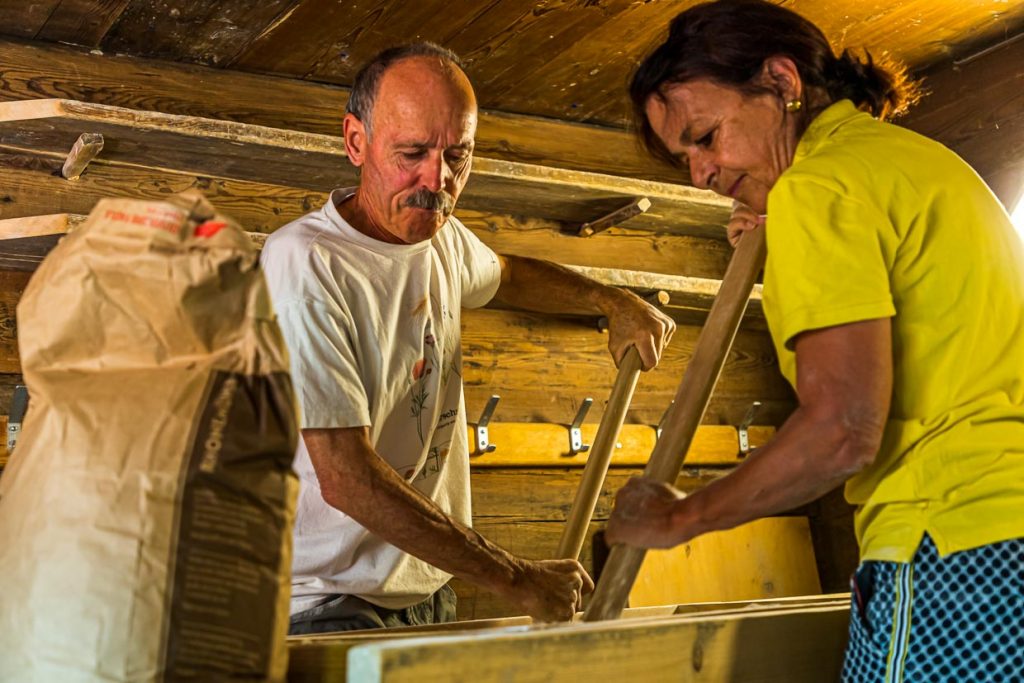
“We don’t sell the bread, but the experience. The knowledge of how rye bread was made in the traditional way,” explains Edmund Steiner of Erlebniswelt Roggen Erschmatt. Winter rye is the grain of the north. It is sown in October. Then grows a little before the snow comes and roots deeply. Valais rye bread is protected with the AOC designation of origin. For this, the rye must have grown in Valais. You can buy Valais rye bread in almost every bakery in the Valais.
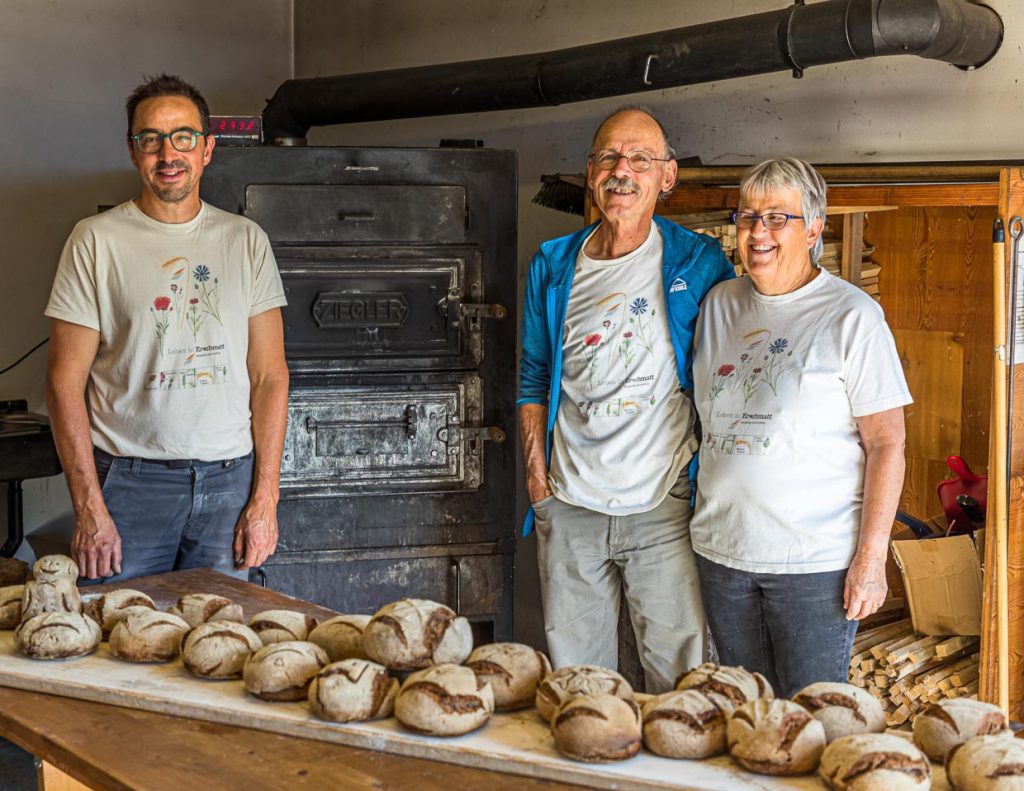
The historic bakery Erschmatt
The old townhouse is home to the bakery. It is 300 years old, just as old as the stone oven. Edmund Steiner reaches into the flour sack and talks about bread. Its importance in the past and the preservation of tradition today. In Erschmatt, the rye dough is still prepared in a flour trough. There is no kneading machine, but hands. Hands that pull wooden paddles through the dough as an auxiliary tool. In the past, baking bread was a man’s job and one of the reasons why bread was rarely baked. Only during the vegetation dormancy did men have time for bread.
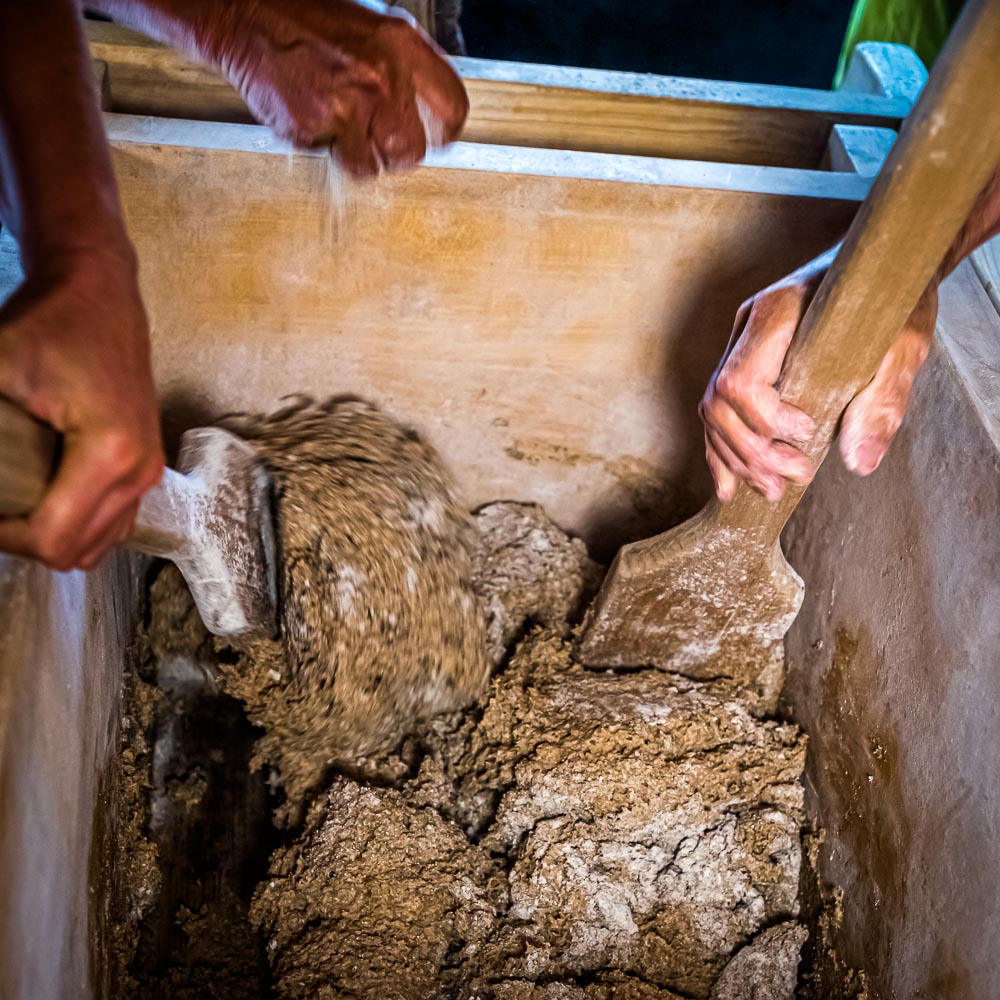
Hard life, hard bread
People used to be self-sufficient. Fresh bread from the baker every day, as we know it today, did not exist back then. The stone oven in the community bakery was in operation around the clock on baking days. Bread was baked day and night and fire and sourdough were passed from family to family. The old stone oven could bake 200 loaves of bread. The dry climate of the region favors storage and makes the rye bread hard without spoiling it. Hard bread, according to Edmund Steiner, was still better than no bread at all. The bread was then split because it was already too hard to cut and could be soaked in soups or in milk. A tip from old times: If an already somewhat dry loaf of bread is covered with a damp kitchen towel in the evening, it is easier to slice the next day.
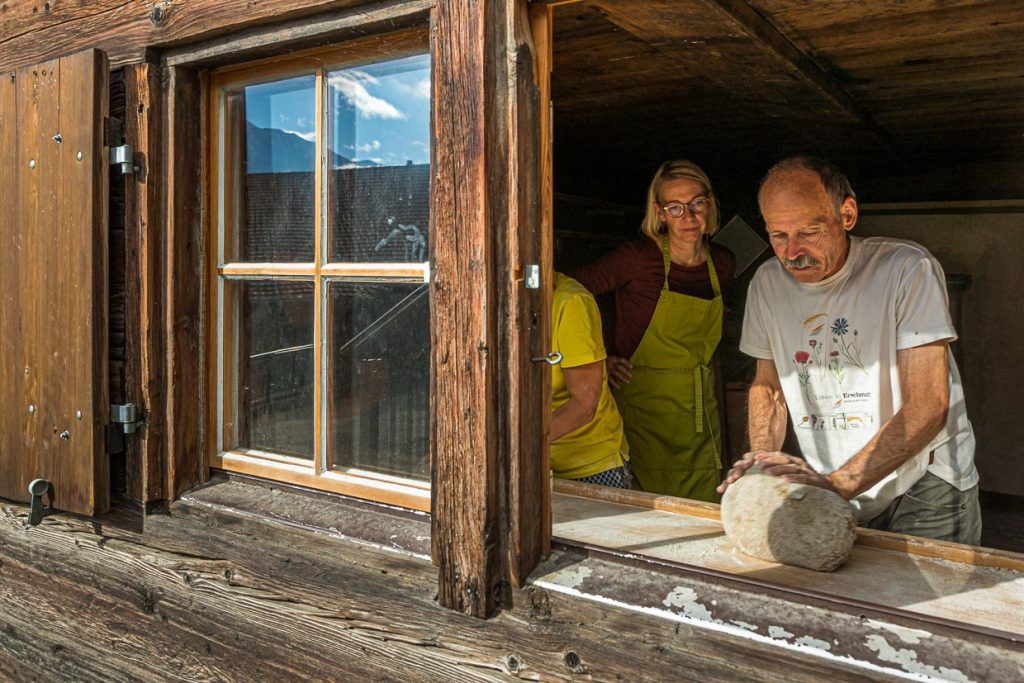
Kneading, shaping and stamping bread loaves
It is warm in the bakery. A pleasant sour smell is in the air. Edmund Steiner has prepared about 15 kg of pre-dough in preparation for the workshop. That will be enough for about 20 loaves. The dough is warm and moist. Flour is mixed in. Six kilos of rye flour, grown in Valais, and one kilo of sourdough, as well as water and salt, are processed. Time and labor are added. Steiner adds the flour to the trough by feel and experience. The dough is very sticky at first. Long wooden spatulas are used to work the flour under the dough.
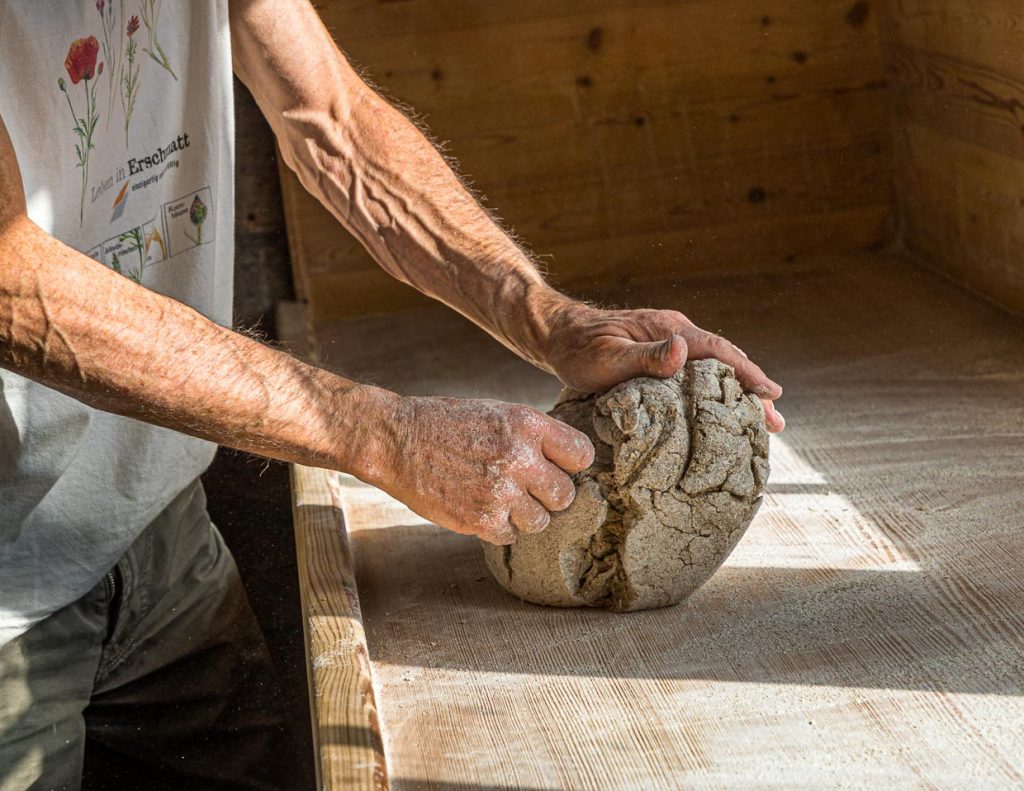
When Edmund Steiner works with the dough, it looks very playful. He guides the dough across the worktop like a ball. For kneading, we should only use the heel of our hand, not our fingers. That way you can use the force better. All the bumps and crevices in the dough should have disappeared by the end.
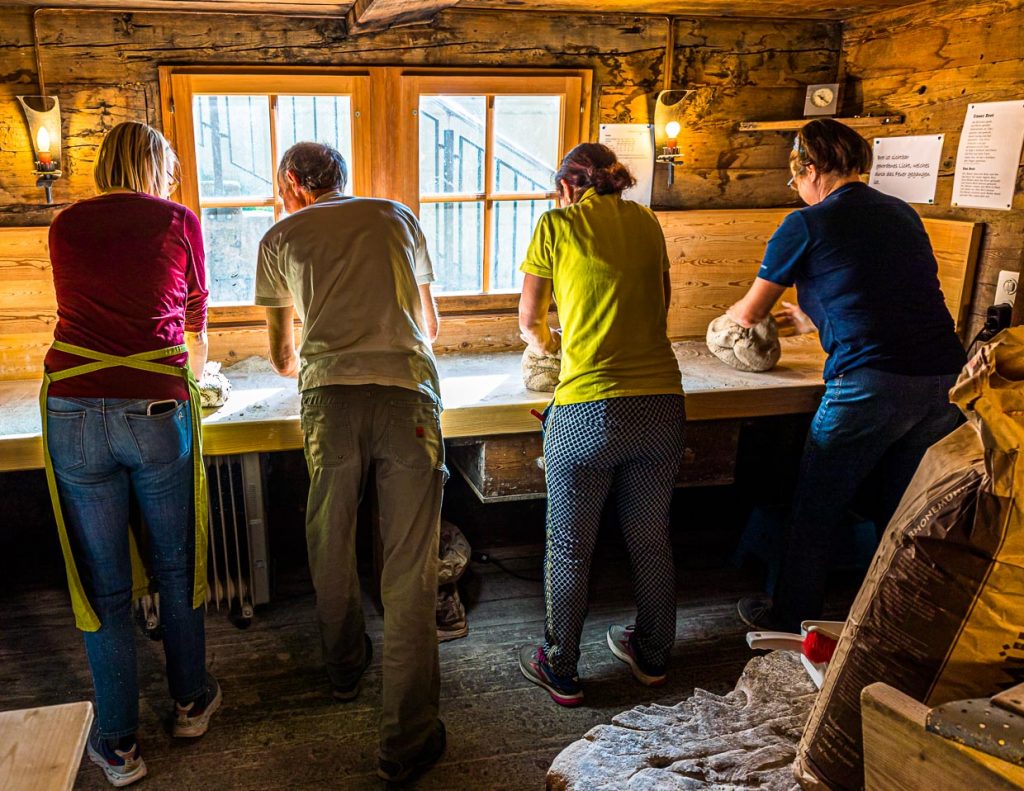
Edmund Steiner forms a dough roll from which he takes the dough pieces. The size of the bread is now determined. Rye is a compact grain. It is ideal to shape the dough into a cone at the end. Crevices in the dough are undesirable, so the cone is again thrown heartily onto the workbench so that it pops.
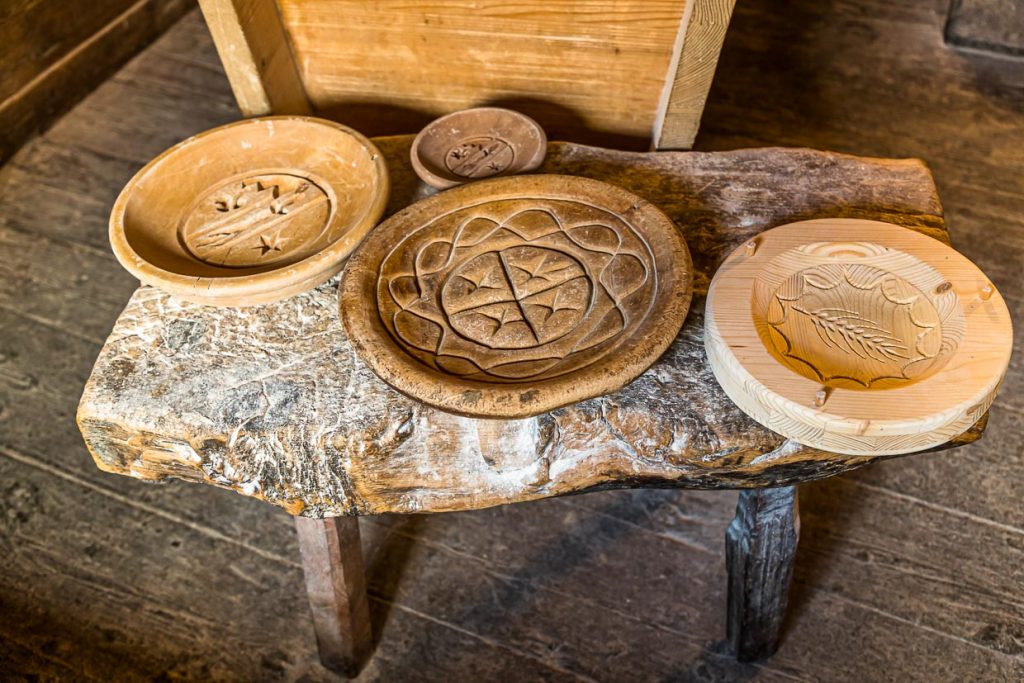
Wooden stamps are used to make a stamp on the dough. In this way, the villagers were able to distinguish their breads after the baking process. Today, workshop participants live out their playful instincts and decorate their own bread. To ensure that the crust breaks open in a controlled manner during baking, three indentations are made with a knife.
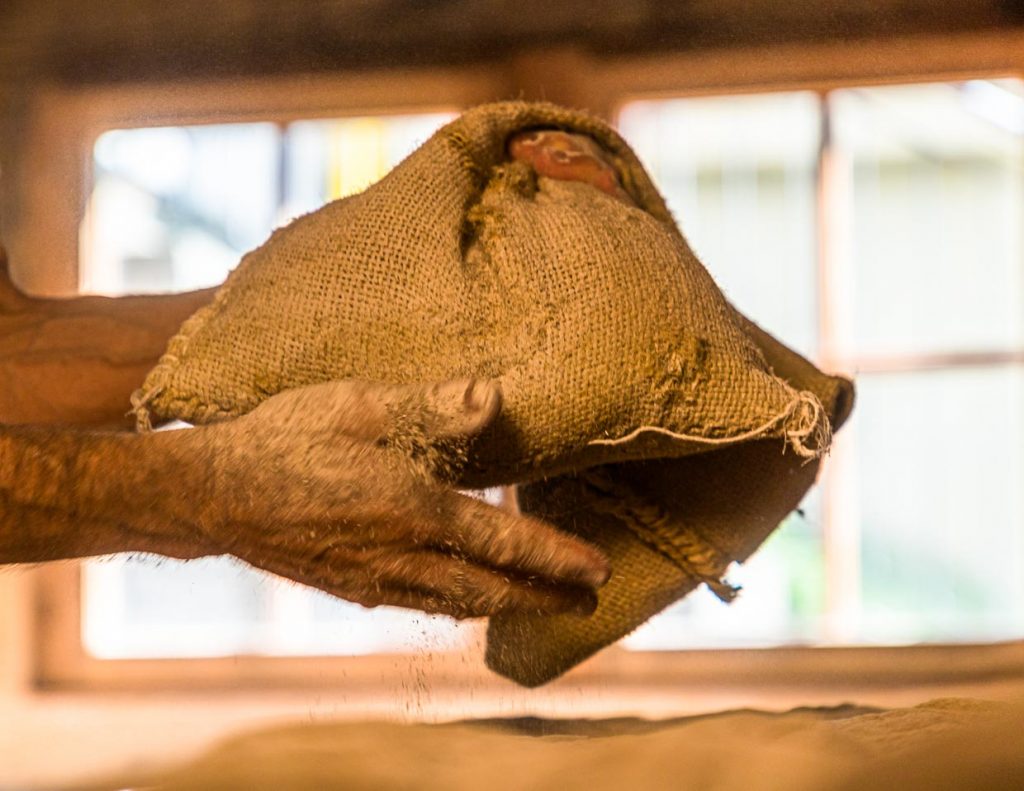
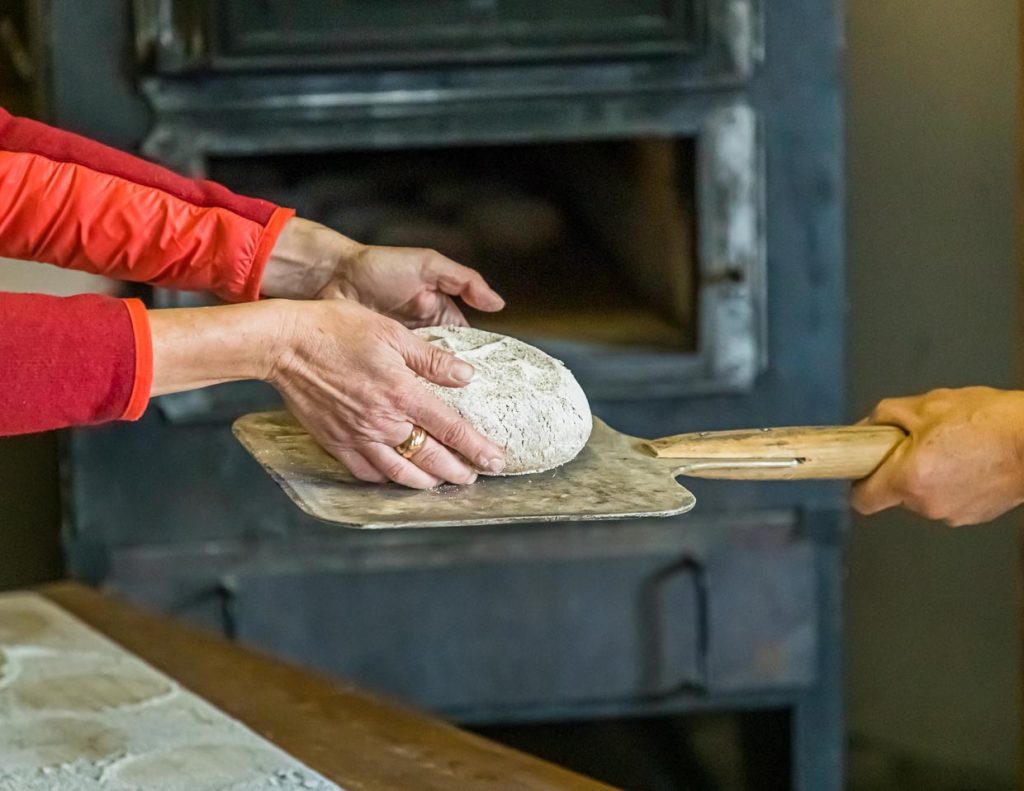
Freshly dusted with flour, the loaves are carried into the adjacent building. Here, too, there is an impressive oven, which Ofner David Da Pieve had already heated up hours ago. Now the oven has 300 degrees and the loaves go into the oven for a baking time of about 60 minutes. Time for a tour of Erschmatt.
The hardships of self-sufficiency
I still don’t quite understand why bread was so rarely baked in the villages back then. Edmund Steiner describes the daily life of the villagers, which visitors can still experience today at various places in Erschmatt. The tour of the village is part of the workshop. In the barn, all the tools for threshing grain are ready. The rye fields are clearly visible from the edge of the village. Life as a self-supporter was exhausting and labor-intensive. Everything was done by hand. Wine, bread, meat, flour, milk, vegetables, potatoes. People were constantly busy. In winter, when there was little to do in agriculture, there was finally time for bread.
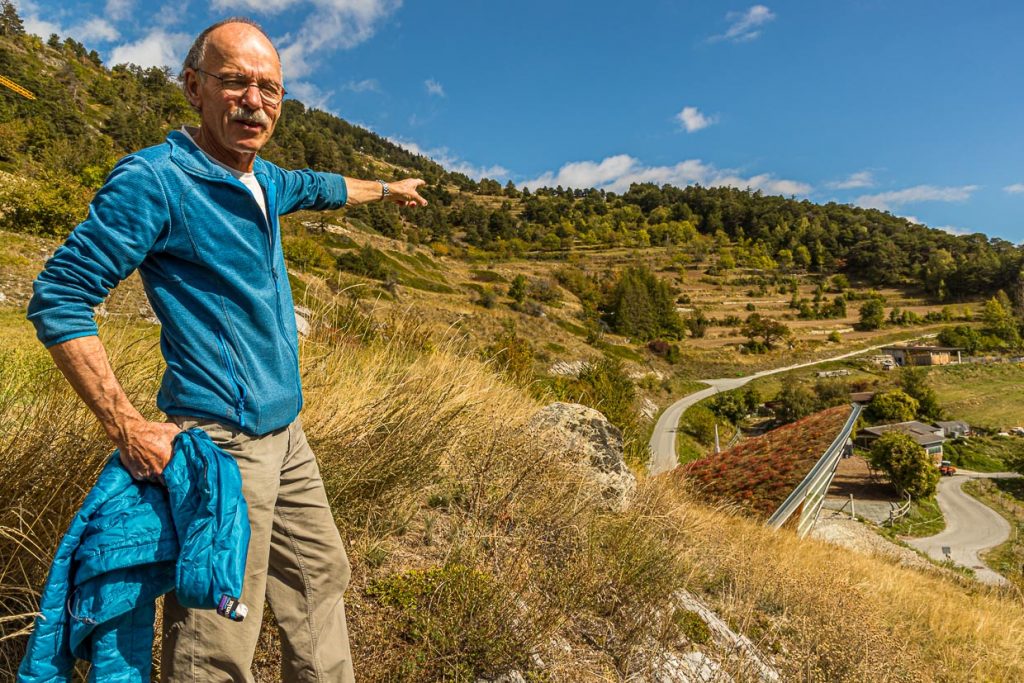
Of emigrants and working farmers
When bread was baked in the village back then, it was a community event. One family after the other baked their bread in the community bakehouse. This happened two to three times a year at the most. When the work in the fields was finished in November and all the meadows were mowed, then the men could go to the bakehouse. Before the growing season began again in April, they baked one more time. After that, it was back out into the fields. Before industrialization, the village of Erschmatt had between 200 and 300 inhabitants. There was not enough land for more people. The others had to emigrate. With the settlement of industry in the Rhone Valley at the beginning of the 20th century, the farmers often became working farmers, who worked in the valley during the day and still supplied their land after work. A road to the village was not built until 1956. Before that, everything was done on foot or by mule. Worker farmers still existed until the early 1970s.
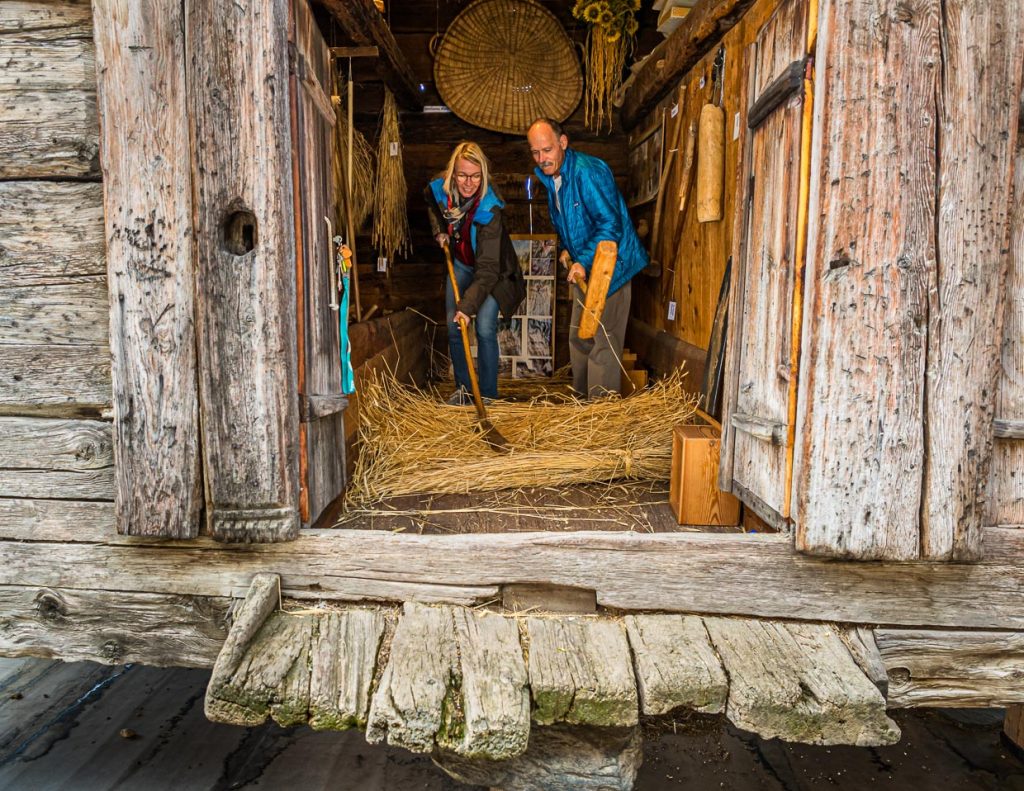
In Valais, there are still about 40 old communal ovens used once a year. People keep the tradition alive. Community baking has long since ceased to be for self-sufficiency. The bread is eaten immediately or frozen. Nothing has changed in the dry climate, so even today you can have around a month of sliced bread if you put the loaf well packed in the bread box.
Wall calendar with photos by Georg Berg available in bookstores (also online) in different sizes: Rye bread from Valais / also as family planner or in French Pain de Seigle du Valais (*)
Travel tip
Erschmatt in the municipality of Leuk in Valais is also called the Rye Village. Visitors can learn about old rye varieties and rare plants in the variety garden. You can thresh and grind rye or bake rye bread in the village bakery according to old tradition and with old equipment.
Booking of the event: Baking rye bread in the traditional Valais way – the rustic experience
The research trip was partly supported on site by Switzerland Tourism
(*) This post contains advertising links (also called affiliate or commission links) that lead to Amazon.de.

